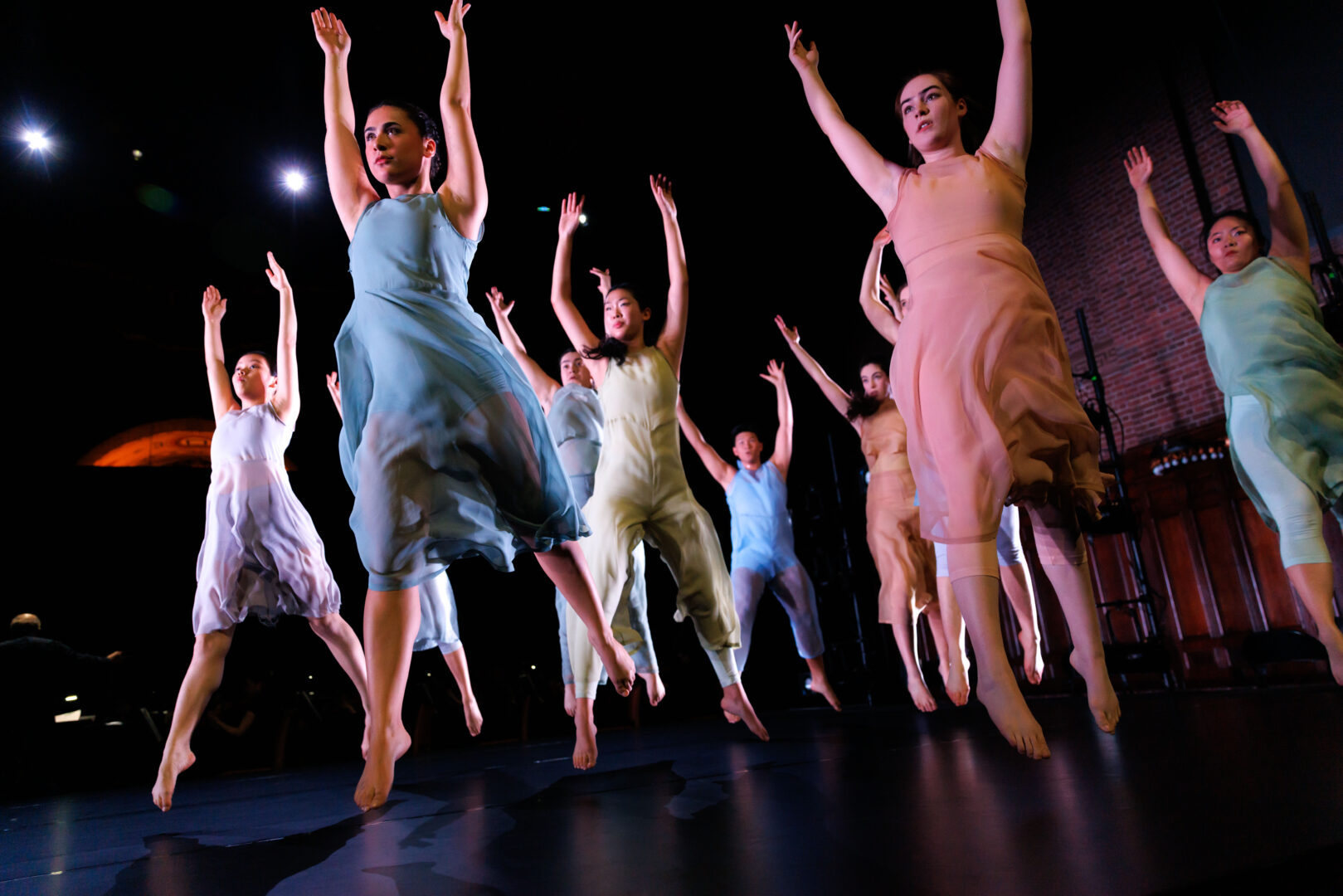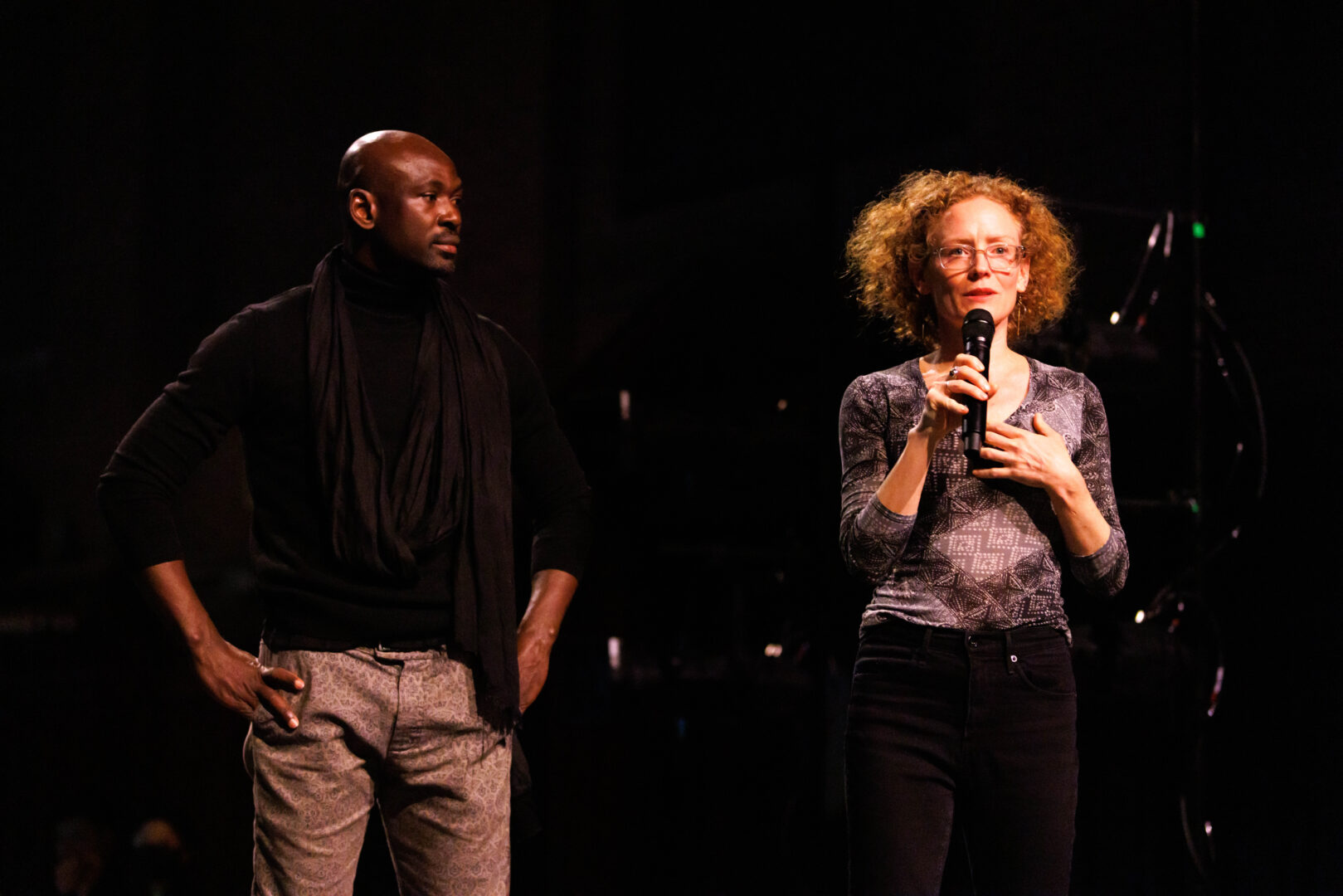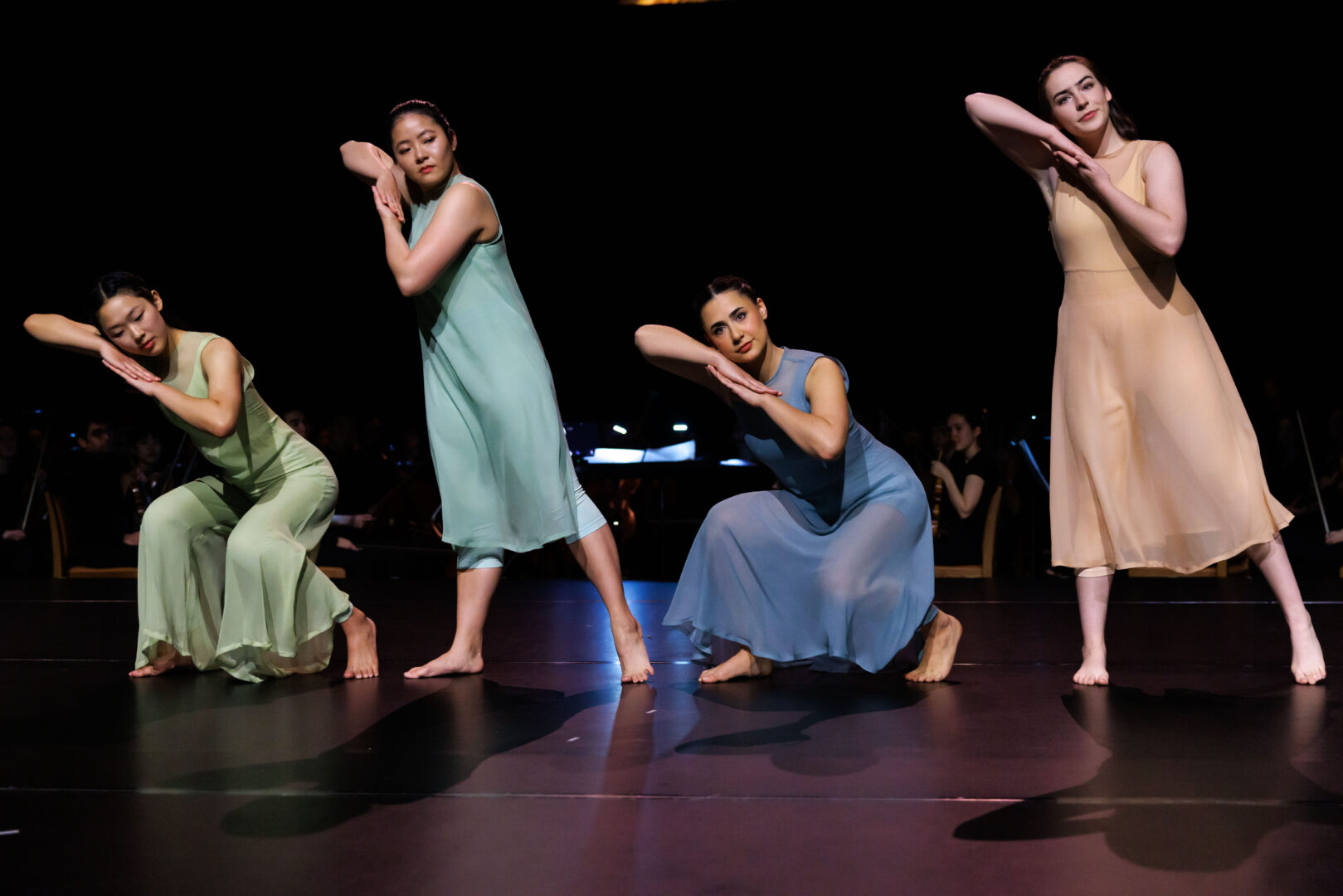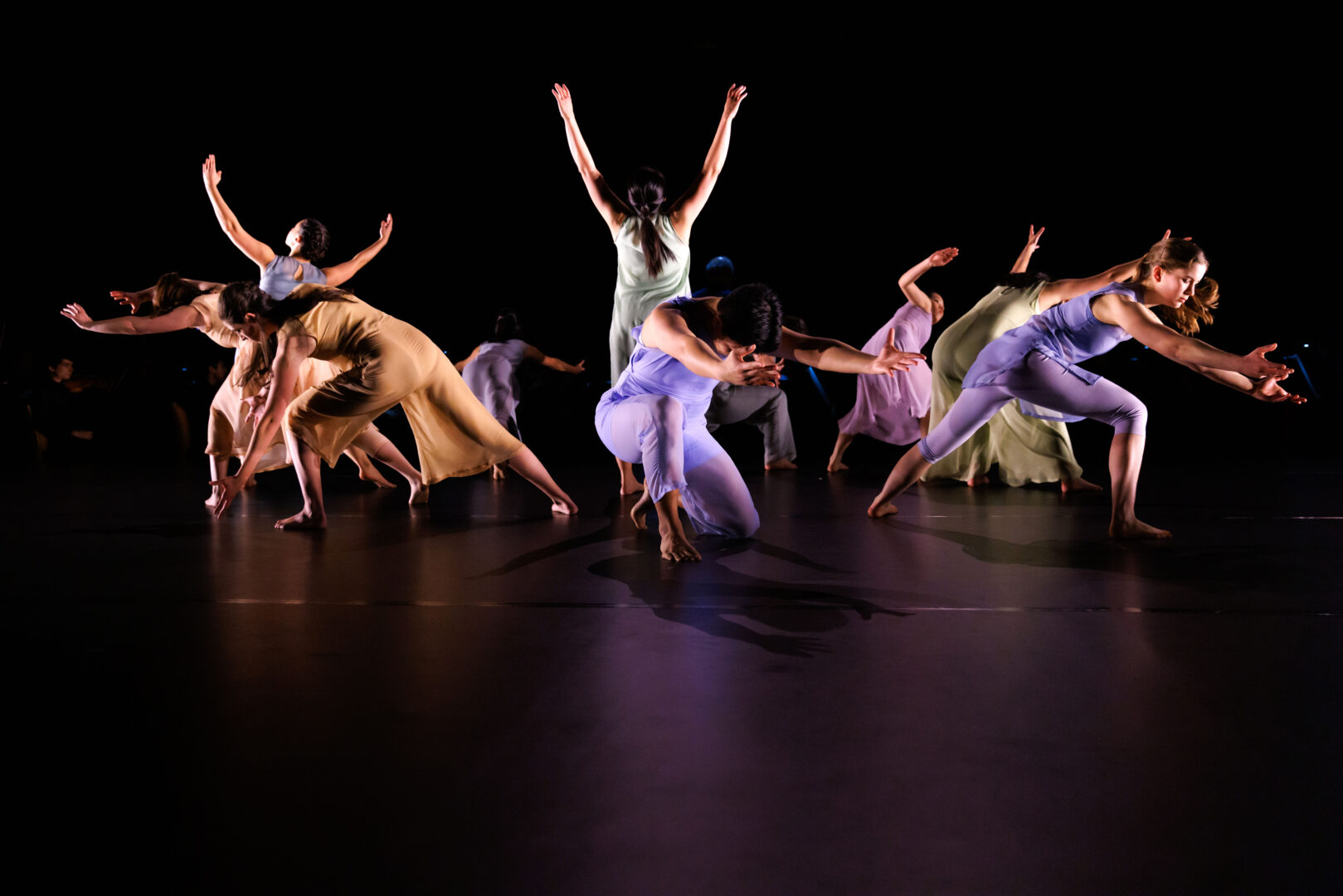
There are some works we just can’t let leave the stage. From Shakespeare’s greatest works to the Broadway musicals that have wormed their way into our hearts and ears, there are stories that demand to be retold, re-danced, and relived. One of those stories is The Rite of Spring. A ballet that has appeared in various versions across the world since it premiered in Paris in 1913, The Rite of Spring returned again last week under the direction of Lacina Coulibaly and Emily Coates.
Originally choreographed by Vaslav Nijinsky with music by Igor Stravinsky, The Rite of Spring originally depicted celebrations of spring, following a young girl, The Chosen One, who becomes a sacrifice for the celebrations and eventually dances herself to death. Since then, the ballet has been adapted to tell a variety of stories from the original to romantic tragedy to advocacy for social and political issues.
This latest version by Lasso and Emily has its own story to tell, too. A collaboration years in the making, from conversations on a piece they loved to modern inspirations and musical inspiration from Yale Symphony Orchestra Conductor William Boughton, this latest version of The Rite of Spring takes on new themes dressed in Emily and Lasso’s ingenuity. We had to sit down with these two to find out what it took to bring their version of The Rite of Spring to the stage.
Showstopper Magazine Online: Can you tell us a bit about yourselves? How did you get involved in dance, choreography, and performing arts?
Lacina “Lasso” Coulibaly: My story is an unusual one because being a dancer was not a decision I made. I found myself absorbed by dance, and I couldn’t get rid of it. Dance affects my way of interacting with people, and my emotional state, and I could even connect with my inner self. These discoveries pushed me to join the National Ballet of Burkina Faso and later my longing to travel to satisfy my thirst for knowledge of the dancing body.
My way of greeting or giving thanks to my parents became a form of dancing. My mother became so accustomed to this way of being that I had embraced it so that spending more than two hours with her without chanting a musical rhythm or drawing some dancing carried doubts. She couldn’t help but ask me if everything was okay. Dance has become my home of refuge, my meditation space, the form of expression that allows me to express myself beyond words.
Emily Coates: I started studying ballet when I was 5 years old, and when I was 16, I moved to New York to attend the School of American Ballet, and eventually joined New York City Ballet. There was never a moment when I said “I want to be a professional dancer.” More like, it became so deeply intertwined with my daily life and my sense of self, the path was obvious. But it was when I left NYCB to join Baryshnikov’s White Oak Dance Project that I really understood and claimed my identity as a dance artist: then, it became my way of adventuring, of connecting, of being in the world. It’s more than an art form to me; it’s a medium. I met Lasso through dancing together. We felt we were reading each other’s minds, though we came from very different backgrounds and countries.
SMO: What led you to choreograph a new look at The Rite of Spring for YSC? What draws you to this piece?
Lasso: Before this production project of the RoS, Emily and I had once talked about The Rite of Spring. I remember telling her about my fondness for The Rite of Spring. Choreographing The Rite of Spring was part of my desires and challenges, and I found it fascinating, the story, ritual, sacrifice, and restoration of the earth. It reminded me of my Burkinabe culture in West Africa which had rituals, offerings/sacrifices, worship/ancestors, fertility dance related to the earth, etc. Some promises become realities. The day Emily shared the possibility of collaborating with YSO on The Rite of Spring. I didn’t hesitate to join her in the choreography. I knew it would be challenging, but as an artist, we need that to feel much more alive. We took up the challenge, and it is satisfying to have gotten the work done with great pride.
Emily: We have Wiliam Boughton, the conductor of the Yale Symphony Orchestra, to thank for this project. He approached me nearly two and a half years ago to ask if I would be interested. I thought immediately that this would be a good project for Lasso and I to collaborate on. We’ve been collaborating since 2007—first on an evening-length duet for the two of us, then a group piece for Ballet Memphis, then another shorter duet. Stravinsky’s music is in my blood from my background dancing in the Balanchine repertory at New York City Ballet (Balanchine and Stravinsky had a groundbreaking collaboration that spanned decades). In 2014, I choreographed for Stravinsky’s The Soldier’s Tale with Liz Diamond on stage direction and David Shifrin on musical direction and got hooked on working with such complex music. I had never aspired to choreograph a version of The Rite of Spring, but once we jumped in, it became pure pleasure, a thrilling challenge to work with such a masterfully composed score.

SMO: In a few words, how would you describe your partnership on this project?
Lasso: Since 2007 I have been collaborating with Emily, and we have developed a partnership of work that goes beyond two artists creating together. It’s like we can read each other’s minds. There is a certain openness to the other’s approach and ideas. We understood that any idea proposed has the potential to acquire another dimension. In this project, I mainly communicate/collaborate with Emily and the dancers and with the conductor of the orchestra, William Boughton. I appreciate his idea of incorporating dance into this project. The Rite of Spring musical score and narration was the common thread that bound us. Thanks to Faith Zamblé for providing us with research materials that were helpful as sources of inspiration. Those resources were nurturing and inspirational to draw out our imagination.
Emily: As Lasso describes, we had a number of different partners and collaborators. Our choreographic collaboration lies at the center for us, and we benefited by the fact that we really understand each other well as artists and creators. William Boughton approached me with the idea to create a full dance production of the work, played live by the Yale Symphony Orchestra. This was such an ambitious and intriguing idea, it was too good to pass up.
SMO: With so many iterations of The Rite of Spring to draw from. What were your biggest inspirations for adapting it?
Lasso: The story of the sacred spring is fascinating, but times have changed, and we are in a different reality. The great challenge was to reimagine The Rite of Spring while taking into account the world in which we are living. Climate change was at the top of the reflection. It is no longer a question of sacrificing but of restoring and saving the planet earth, which is in perdition. We were inspired by certain of the original narration of The Rite of Spring while letting ourselves be captivated by the rhythmic creativity of Stravinsky.
Emily: There have been many, many productions of The Rite of Spring. The original story is filled with violence, ending in a “virgin sacrifice,” with notions of early 20th-century primitivism threading throughout. We reworked the narrative into a more abstracted study of a community moving through time: one that coheres, fragments, and restores itself continually. Our Chosen One saves the planet—or at least tries to.
SMO: Did you originally see The Rite of Spring as a potentially environmentalist piece?
Lasso: We thought about the environmental aspects of the story; we do know that the original Rite of Spring evokes a return of spring and the renewal of the Earth through the sacrifice of a virgin chosen to dance herself to death.
Emily: We changed that storyline—as many other choreographers before us have done. Our version thinks about the earth as the sacrificed one. The Chosen One is the one who sees most clearly, and attempts to save the planet.

SMO: Can you talk a bit about the role that Beinecke Library’s exhibition “The World in Maps 1400-1600” played in the creation of your The Rite of Spring? What influenced the other adjustments and changes you made to the themes of this story? What is the story to you now?
Lasso: The Rite of Spring is perhaps the work in the history of choreographic art that has generated the most different forms of appropriation. It is a privilege to choreograph this emblematic work which can be considered the beginning of modernism. On top of that, we have an orchestra, which is huge.
The perdition of our planet is a global emergency. We need to join forces and identify effective strategies. It is time to think about what we owe to the planet for our survival. We also incorporated the musician’s motions while playing in an orchestra.
Emily: We had a wonderful dramaturg, Faith Zamblé, who early on researched materials in the Beinecke collection that might inspire or inform our project. Faith looked at a range of early 20th c materials: the archives of artists who had been left out of the modernist canon, including their handwriting, travel images, nature images, and finally maps, which then appeared in full, in the Beinecke’s exhibition. Mapping is a choreographic concept, and we found ideas there to inspire our choreographic design and themes—particularly, that we might subvert the idea of mapping as solipsistic seizure, and instead propose mapping planetary connectivity and care.
SMO: Beyond inspiration, you are, of course, working with an incredible cast of dancers. What has it been like to work with them to bring this to life?
Lasso: The dancers were hugely useful in the exploration and development of our choreographic ideas related to the different scenes of The Rite of Spring. It was necessary to have dancers like them so that we could see the quality and the symbolism regarding the story and the orchestra, which is a personal touch from our imagination.
Emily: Most of the dancers have been involved in the project since last February when we did a six-week choreographic intensive and began to develop the material. For Yale students, this is an incredibly long arc of time to commit to a process, and it shows in their dancing. The dancers have lived with this material for months and months and months. This devotion of time provides the foundation for the choreography. We were also inspired by their individual qualities and tried to draw these out, as well as to push them to grow as artists: understanding how to form a strong ensemble, how to dance together to complicated music, how to listen, how to fill space and hold time. We’ve been working on all of these things and their growth has been exponential.

SMO: Do you have a favorite moment in the performance?
Lasso: My favorite part is “Dance of the Earth” (that scene reflects the idea of mapping), and the “Sacrificial Dance” (that scene that reflects the reality of our world).
Emily: I love how the work we made builds; you get carried on a tidal wave of relentless movement, emotion, and sound. And yet it remains very human: you are with these dancers, at this moment in time.
SMO: The Rite of Spring opened just over a week ago. What were you most excited to share with audiences?
Lasso: The desecration of our planet is a global emergency. We need to join forces and identify effective strategies. We have to think about what we owe to the planet for our survival. We already started the process so we are inviting the audience to join us for that journey.
Emily: Following that theme, we need to work together across differences, to address global crises. It may seem insignificant in the face of so much disaster, but I do believe the community we can imagine and build through art-making can offer a template—a map if you will—for how to proceed.













